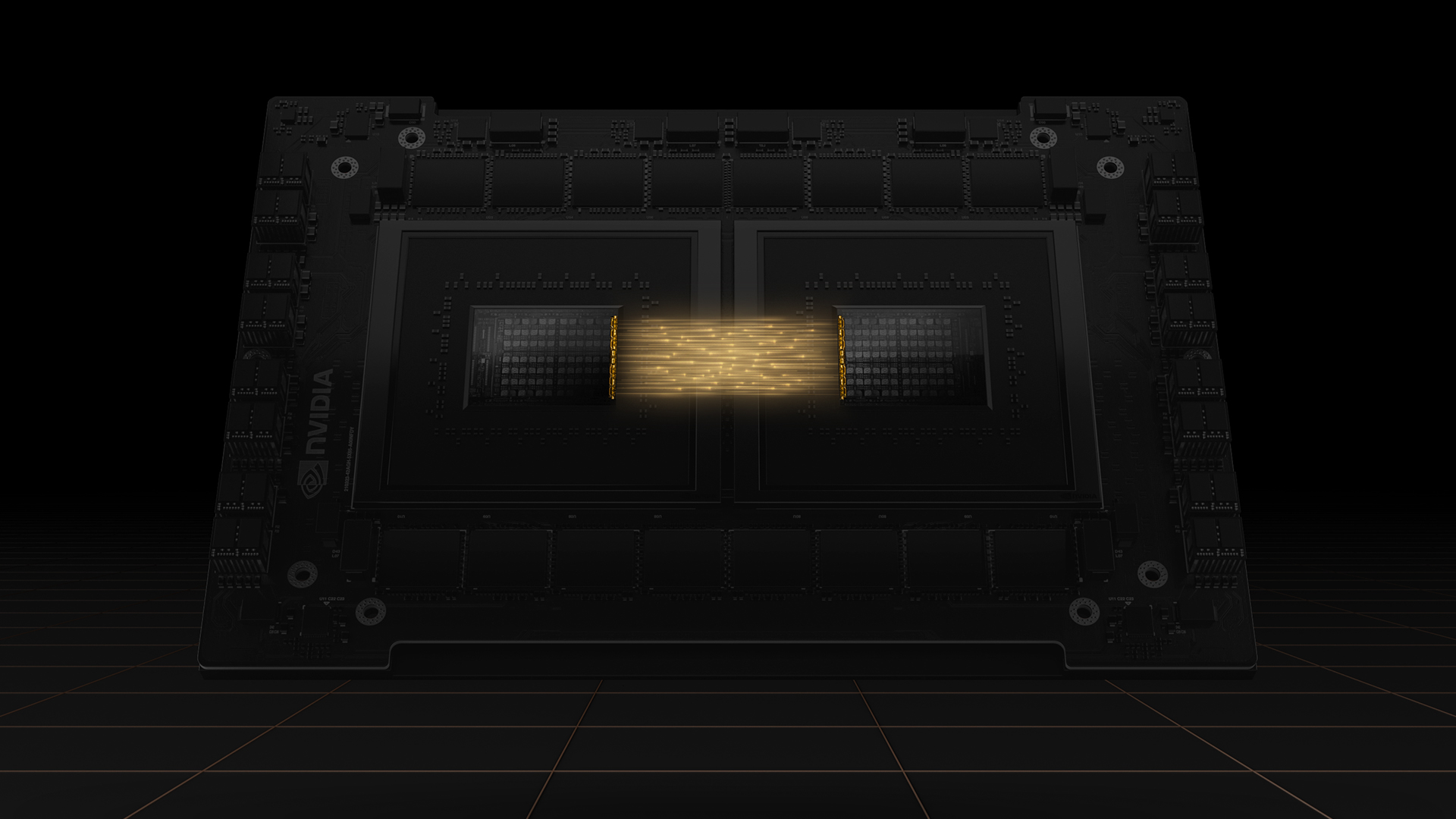
Less Coding, More Science: Simplify Ocean Modeling on GPUs With OpenACC and Unified Memory
TL;DR
- NVIDIA HPC SDK v25.7 advances unified memory programming for GPU-accelerated HPC workflows, automating data movement between CPU and GPU.
- The release reduces manual data management, shortens GPU porting cycles, and lowers bugs by leveraging a unified address space.
- Coherent NVIDIA platforms with high-bandwidth interconnects (Grace Hopper, GB200 NVL72) enable automatic data migration and shared memory between CPU and GPU.
- Real-world porting of the NEMO ocean model to GPUs shows speedups in the ~2x–~5x range; OpenACC 3.4 capture modifier helps address data races in asynchronous execution.
- The update aligns with NVIDIA’s unified memory strategy to boost developer productivity and expand GPU workloads in ocean and climate science.
Context and background
Unified memory programming is positioned as a central feature for HPC on GPU-accelerated systems. Coherent platforms such as the NVIDIA Grace Hopper Superchip family and GB200 NVL72 systems deliver a shared address space across CPU and GPU, enabling data movement to be handled automatically by the CUDA driver. These capabilities rely on high-bandwidth interconnects like NVLink-C2C and a unified memory model that reduces the need for manual data transfers. Since late 2023, NVIDIA has been weaving unified memory features into the HPC ecosystem, with Grace Hopper-based systems already deployed at major centers including CSCS in Switzerland and JSC in Germany. The result is a shift toward developer productivity, allowing scientists to focus more on parallelization and less on data logistics. NVIDIA HPC SDK v25.7 release. In this context, real-world porting work, such as the NEMO ocean modeling framework, serves as a concrete case study. NEMO’s codebase, including memory- and data-intensive components like derived types and allocatable arrays, illustrates the historical complexity of manually managing data transfers when porting to GPUs. The NVIDIA blog discusses how unified memory can reduce or even eliminate such boilerplate, enabling developers to tackle parallelism more directly. The narrative also highlights how Grace Hopper architectures—paired with measures like the first-touch policy and automatic page migrations introduced in CUDA 12.4—can improve locality and performance during GPU offloads. For those exploring GPU porting, this material offers a roadmap from CPU-only execution to GPU-accelerated kernels with fewer code changes. The discussion references broader NVIDIA work on simplifying GPU programming for HPC with Grace Hopper platforms, including prior blog coverage on unified memory and OpenACC workflows, and emphasizes how a unified memory model can accelerate porting cycles and reduce synchronization barriers when properly managed. NVIDIA HPC SDK v25.7 release.
What’s new
- Complete toolset for unified memory programming: The HPC SDK 25.7 delivers a full suite that automates data movement between CPU and GPU, reducing manual data management and enabling more direct parallelization.
- Reduced data management and faster porting: With a shared address space, data movement is handled by the CUDA driver, enabling developers to port loops and kernels with less boilerplate and fewer bugs.
- OpenACC-oriented improvements and race-condition fixes: The blog explains that asynchronous execution in OpenACC can introduce data races when GPUs access shared data as CPUs exit functions. OpenACC 3.4 introduces a capture modifier on data clauses that resolves these race conditions, enabling safer asynchronous data usage without large-scale refactoring. NVIDIA HPC SDK v25.7 release.
- Async execution and better concurrency: Developers can use async directives and synchronization management (e.g., !$acc wait) to overlap computation and communication, while ensuring data visibility for MPI or other CPU-side routines.
- Automatic memory migration and locality benefits: CUDA 12.4 introduces access-counter heuristics that migrate frequently accessed CPU memory pages to GPU memory, improving locality on Grace Hopper. Similar functionality exists on compatible x86-hosted GPU systems with recent kernels.
- Real-world porting of NEMO (GYRE_PISCES benchmark): The NEMO port to GPUs demonstrates the workflow benefits, starting from CPU execution and progressively porting diffusion and advection steps, with speedups observed in the ~2x–~5x range as portions move to Hopper. The porting was performed by annotating loops with OpenACC directives and leaving data management to the driver and hardware.
- Practical porting steps and incremental gains: The description shows a stepwise porting path (horizontal diffusion, tracer advection, vertical diffusion and time-filtering) that yields meaningful performance gains at each stage, illustrating how unified memory supports faster experimentation and iteration.
In short, HPC SDK 25.7 and unified memory programming together lower the bar for GPU adoption in ocean and climate models, enabling researchers to focus on scientific objectives rather than low-level data shuttling. The result is fewer code changes, earlier speedups, and more room to explore workloads on GPUs. The referenced NEMO case study underscores that productivity gains can accompany tangible performance improvements. NVIDIA HPC SDK v25.7 release.
Why it matters (impact for developers/enterprises)
The move toward unified memory programming directly targets one of GPU development’s persistent pain points: data management. By providing a unified address space where CPU and GPU share memory, developers spend less time annotating explicit data transfers and more time refining parallel regions. This shift reduces debugging complexity and accelerates porting cycles for scientific workloads, enabling teams to test and validate more GPU-accelerated configurations within shorter timeframes. In real-world terms, the NEMO port demonstrates how developers can begin with CPU code, introduce OpenACC-parallel regions, and see meaningful performance improvements as portions migrate to the Hopper GPU. Moreover, the integration of features like the OpenACC 3.4 capture modifier helps prevent data races that can arise when asynchronous GPU work touches data shared with the CPU. This means teams can pursue asynchronous execution strategies with greater confidence, which is crucial for overlapping computation with communication in large-scale simulations. The CUDA driver’s role in automatic memory migration complements the developer workflow by improving locality without required rewrites, particularly on Grace Hopper systems that benefit from high-bandwidth interconnects and a shared memory model. These factors together create a compelling value proposition for research institutions and enterprises pursuing GPU acceleration for ocean modeling and related HPC workloads.
Technical details or Implementation (selected insights)
The NVIDIA blog emphasizes a concrete transformation path enabled by unified memory on Grace Hopper and similar GPU architectures. In traditional GPU porting, developers must manage data movement for each allocatable array, derived type member, or vector, sometimes requiring separate deep-copy logic to ensure correct device-visible data. The deep-copy pattern can create complex, error-prone code when multiple arrays, modules, or derived types are involved. By contrast, unified memory presents a single address space where CPU and GPU can access the same data structures without explicit copy directives in many cases. This allows for more direct parallelization using OpenACC and reduces the cognitive load associated with data transfers. The blog notes specific examples from the NEMO ocean model port. It discusses a typical pattern where loops access multiple arrays, some embedded within derived types or declared in modules, making data movement management a nontrivial burden in real codes. With unified memory, such data dependencies can be expressed primarily through parallel regions, while the CUDA driver handles data movement and placement behind the scenes. The port also highlights asynchronous execution considerations: adding async clauses can improve concurrency, but requires careful synchronization to avoid data races. The OpenACC 3.4 capture modifier addresses these race conditions, enabling safer asynchronous data usage without broad refactoring. Grace Hopper’s architecture—combining CPU and GPU coherency with NVLink-C2C interconnect—enables high-bandwidth data flows and coherent memory access across processors. CUDA 12.4 complements this by enabling automatic page migrations based on access patterns, moving frequently used pages to GPU memory to improve locality. While HMM-based approaches exist on other systems, Grace Hopper is positioned to outperform them in part due to tighter hardware coherence and memory-management integration. The NEMO case study shows a practical, incremental porting strategy. The timeline moves from CPU execution on Grace to Hopper-accelerated computations by progressively porting the horizontal diffusion of active and passive tracers, then tracer advection, and finally vertical diffusion and time-filtering. Across these steps, developers observed speedups in the 2x–5x range, illustrating the productivity and performance benefits of unified memory in a real-world ocean-modeling workflow. These results reflect not only performance gains but also early-stage productivity improvements, as code annotation with OpenACC can be staged rather than rewritten from scratch. NVIDIA HPC SDK v25.7 release.
Key takeaways
- Unified memory streaming reduces manual data management in GPU-accelerated HPC codes.
- OpenACC gains are supported by OpenACC 3.4, mitigating race conditions in asynchronous execution.
- CUDA driver-driven data migration and Grace Hopper’s memory model improve locality and performance without extensive code rewrites.
- Real-world ocean modeling (NEMO) demonstrates meaningful speedups and faster porting cycles.
- The 25.7 HPC SDK aligns with a broader industry shift toward coherent CPU-GPU platforms for scientific workloads.
FAQ
-
What is unified memory programming in this release?
This release provides a complete toolset enabling automatic data movement and a unified address space across CPU and GPU, reducing manual data management.
-
How does it affect OpenACC on Grace Hopper and similar platforms?
It enables safer and more productive porting by reducing data-management boilerplate and supporting OpenACC 3.4 capture modifiers to address asynchronous data races, while allowing parallel regions to be annotated with OpenACC directives.
-
What performance can be expected when porting NEMO or similar workloads?
In the NEMO ocean model port example, observed speedups ranged from roughly 2x to 5x as portions of the code were ported to Hopper GPUs, with incremental gains as more of the workflow moved to GPU execution.
-
What about data races and synchronization in asynchronous GPU execution?
The OpenACC 3.4 capture modifier helps resolve race conditions when GPU kernels access shared data asynchronously, reducing the need for large-scale refactoring.
-
What should developers focus on when porting to unified memory GPUs today?
Start with parallelizing performance-critical loops using OpenACC, rely on the CUDA driver for data movement, consider asynchronous execution with careful synchronization, and leverage the capture modifier to mitigate race conditions as needed.
References
- NVIDIA Dev Blog: Less Coding, More Science: Simplify Ocean Modeling on GPUs With OpenACC and Unified Memory — https://developer.nvidia.com/blog/less-coding-more-science-simplify-ocean-modeling-on-gpus-with-openacc-and-unified-memory/
More news
NVIDIA HGX B200 Reduces Embodied Carbon Emissions Intensity
NVIDIA HGX B200 lowers embodied carbon intensity by 24% vs. HGX H100, while delivering higher AI performance and energy efficiency. This article reviews the PCF-backed improvements, new hardware features, and implications for developers and enterprises.
OpenAI reportedly developing smart speaker, glasses, voice recorder, and pin with Jony Ive
OpenAI is reportedly exploring a family of AI devices with Apple's former design chief Jony Ive, including a screen-free smart speaker, smart glasses, a voice recorder, and a wearable pin, with release targeted for late 2026 or early 2027. The Information cites sources with direct knowledge.
Predict Extreme Weather in Minutes Without a Supercomputer: Huge Ensembles (HENS)
NVIDIA and Berkeley Lab unveil Huge Ensembles (HENS), an open-source AI tool that forecasts low-likelihood, high-impact weather events using 27,000 years of data, with ready-to-run options.
How chatbots and their makers are enabling AI psychosis
Explores AI psychosis, teen safety, and legal concerns as chatbots proliferate, based on Kashmir Hill's reporting for The Verge.
How to Reduce KV Cache Bottlenecks with NVIDIA Dynamo
NVIDIA Dynamo offloads KV Cache from GPU memory to cost-efficient storage, enabling longer context windows, higher concurrency, and lower inference costs for large-scale LLMs and generative AI workloads.
Kaggle Grandmasters Playbook: 7 Battle-Tested Techniques for Tabular Data Modeling
A detailed look at seven battle-tested techniques used by Kaggle Grandmasters to solve large tabular datasets fast with GPU acceleration, from diversified baselines to advanced ensembling and pseudo-labeling.





